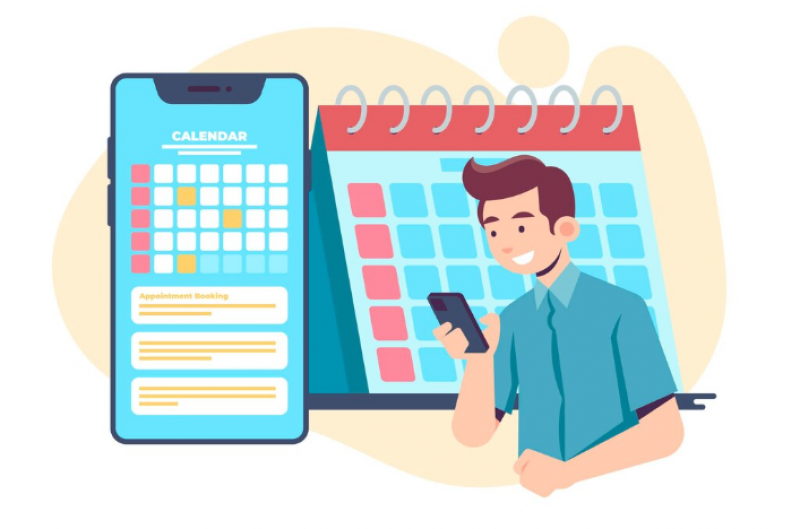Missed bookings cost small businesses more than unused time slots. They waste staff hours, frustrate customers, and reduce revenue. No-shows alone can lead to thousands in lost revenue each year.
The solution isn’t another generic calendar app; it’s investing in the right appointment scheduling software in 2025, as it provides tools designed to reduce no-shows with reminders, sync staff calendars instantly, and even connect payments directly to bookings.
For many owners, switching to small business appointment scheduling tools has been the difference between chaos and control. Let’s explore what matters most and which platforms are leading the way this year.
Key Features to Consider in Appointment Scheduling Software
Choosing the appropriate appointment scheduling software in 2025 is not about the tool that has the most features. A single consultant will require something straightforward and custom, whereas a large location salon or clinic will need software that can be expanded. A powerful and easy-to-use integration can drive business growth without introducing complexity.
At a minimum, look for these essentials:
- Automated reminders that reduce no-shows.
- Calendar syncing so staff never miss a beat.
- Flexibility to support both solo operators and multi-location teams.
- Analytics to help track what’s working (and what’s not).
- Integrated payments that turn bookings into transactions effortlessly.
When these fundamentals are in place, it reduces time and stress, creating a smoother experience for both your staff and your customers.
Top 10 Appointment Scheduling Software for SMBs in 2025

Although there are many competitors in the market, some platforms consistently stand out as the top appointment software for SMBs. For owners seeking small business scheduling software, the challenge is finding options that are both intuitive for everyday use and adaptable as the business grows, without adding enterprise-level complexity.
The 10 Best Tools at a Glance
1. Q-nomy
Q-nomy is a combination of queue management and appointment booking. It suits healthcare, banking, and retail businesses that deal with walk-ins and booked customers. It assists in minimizing wait times and simplifying the physical traffic.
2. Calendly
Calendly is a trendy scheduler and is quick to set up. It is compatible with calendars and video tools, so scheduling is no longer a time-consuming back and forth, but a one-two-slick click and done.
3. Acuity Scheduling (Squarespace Scheduling)
Acuity is highly customizable. It allows bookings with branding, payment, and reminders, which makes it applicable to both individuals and service-based businesses.
4. Booksy
Booksy is aimed at the beauty and wellness segment. It has marketplace listings, in-built payments, and customer ratings, making it ideal for salons and spas of all sizes.
5. Square Appointments
Square Appointments is a perfect match with the payment tools of Square. It is worthwhile for existing retailers and service providers who have been using Square POS.
6. Zoho Bookings
Part of the Zoho suite, Zoho Bookings is well-suited for businesses that use Zoho CRM or Mail. It includes two-way calendar syncing, payments, and multi-location support.
7. SimplyBook.me
SimplyBook.me supports detailed tailoring and branded pages. It provides HIPAA compliance, a customer app, and integration with Stripe or PayPal.
8. Sign In Scheduling (formerly 10to8)
Sign-in scheduling works well in healthcare and education. It includes reminders, accessibility tools, and multi-location support.
9. Appointlet
Appointlet is lightweight and integrates smoothly into sites, emails, and pages. It’s a solid choice for agencies and small teams needing a free tool.
10. Setmore
Setmore offers quick onboarding and mobile access. Its free plan includes calendar syncing and SMS or email reminders, making it ideal for small teams.
How to Choose the Right Scheduling Software for Your Business

With so many options on the market, choosing can feel overwhelming. But here’s the key: don’t just think about today, think about where your business will be in a year or two. Recent comparisons of leading scheduling apps state that the best platforms should grow with you, rather than box you in.
When reviewing top appointment software, weigh the following factors:
- A pricing plan that makes sense now and in the long term
- Integrations with your CRM, payment systems, and calendars
- Mobile-friendly access and support for multiple locations
- Security that meets standards like HIPAA or GDPR
- Simplicity for both staff and customers
- Solid support and training resources when you need them
If a platform ticks these boxes, you’ll avoid “outgrowing” your scheduling system and keep your business running smoothly as it expands.
In Conclusion
The right scheduling software is not merely a convenience, but a valuable tool. It minimizes no-shows, makes the customer happier, and puts time back into vital work. Granted, you might adopt a more well-known name, such as Calendly, or adopt a more all-inclusive one, such as Q-nomy, but the appropriate small business scheduling software soon becomes part of your rhythm.
Which platform has worked best for you? Share your experiences with small business scheduling software. Your insights can guide other business owners still deciding which tool to adopt.
Post Comment
Be the first to post comment!





